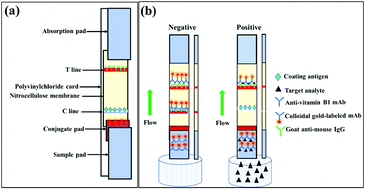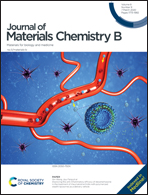Production of a monoclonal antibody for the detection of vitamin B1 and its use in an indirect enzyme-linked immunosorbent assay and immunochromatographic strip†
Abstract
A monoclonal antibody (mAb) against vitamin B1 was prepared and based on this, an indirect competitive enzyme-linked immunosorbent assay (ic-ELISA) and colloidal gold-based immunochromatographic test (ICT) strip were developed. The 50% inhibition concentration (IC50) and the limit of detection (LOD) for the developed ic-ELISA were estimated to be 20.71 ng mL−1 and 4.51 ng mL−1 in the assay buffer. Vitamin B1 in energy drinks, vitamin tablets, and infant milk powder samples was detected by the developed ic-ELISA and the average recoveries ranged from 80.63% to 103.05%. The vitamin B1 content in energy drinks, vitamin tablets, and infant milk powder samples were confirmed by using liquid chromatography tandem mass spectrometry (LC-MS/MS). Moreover, the cut-off value of the developed ICT strip assay was 250 ng mL−1, with a LOD value of 5.33 ng mL−1. Real samples were used to validate the reliability of the developed ICT strip. All results demonstrated that our developed methods are suitable for the detection of vitamin B1 in food and pharmaceutical products.



 Please wait while we load your content...
Please wait while we load your content...